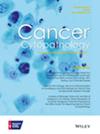Selection of neuroendocrine markers in diagnostic workup of neuroendocrine neoplasms: The real-world data and machine learning model algorithms
Abstract
Background
Accurate diagnosis of neuroendocrine neoplasms (NENs) is challenging, especially in poorly differentiated neuroendocrine carcinomas (NECs). This study was aimed to search the best or best combination of neuroendocrine markers in the diagnostic workup of NENs via analysis of the real-world data and machine learning algorithms.
Methods
Cytology cases with a workup of four neuroendocrine markers (chromogranin, synaptophysin, CD56, and INSM1) were retrieved. Sensitivity, specificity, and area under the curve of receiver operating characteristic curve (AUC-ROC) were calculated for each marker alone or in combination. Two machine learning algorithms, neural network and random forests, were also tested.
Results
The study cohort included 106 NENs (64 NECs and 42 well-differentiated neuroendocrine tumors [NETs]) and 36 non-NEN cases. The combination of synaptophysin and INSM1 had sensitivity of 0.95, specificity of 0.92, and AUC-ROC of 0.93. Addition of CD56 to the combination further increased the sensitivity and AUC-ROC to 1 and 0.96, respectively, in all NENs as well as NEC cases. In addition, the combination of chromogranin, synaptophysin and INSM1 had sensitivity of 1, specificity of 0.92, and AUC-ROC of 0.96 in NETs. Machine learning models, specifically random forests and neural network, confirmed the efficacy of combining synaptophysin, INSM1, and CD56.
Conclusions
The combination of synaptophysin, INSM1, and CD56 has the best performance in diagnostic workup of all NENs, although chromogranin may be selected for NETS. The random forests and neural network models support the common practice rule of requiring at least two out of three markers to be positive for optimal marker utilization.




 求助内容:
求助内容: 应助结果提醒方式:
应助结果提醒方式:


